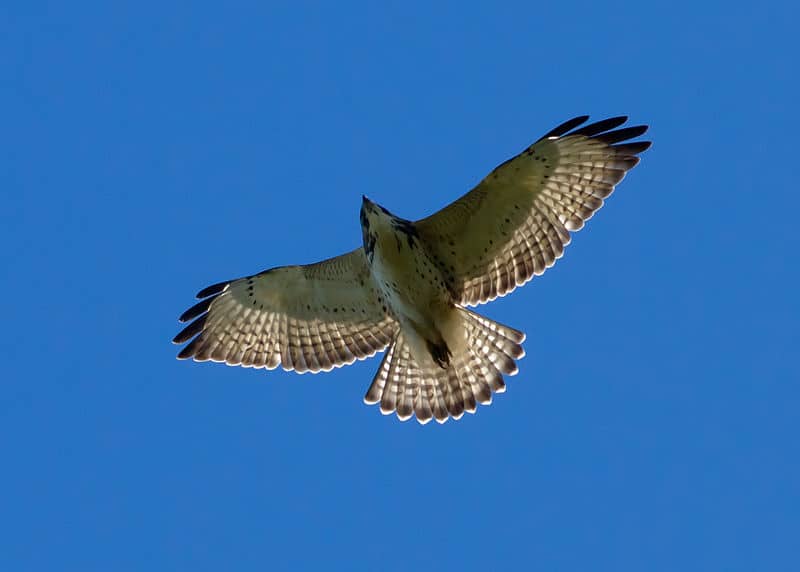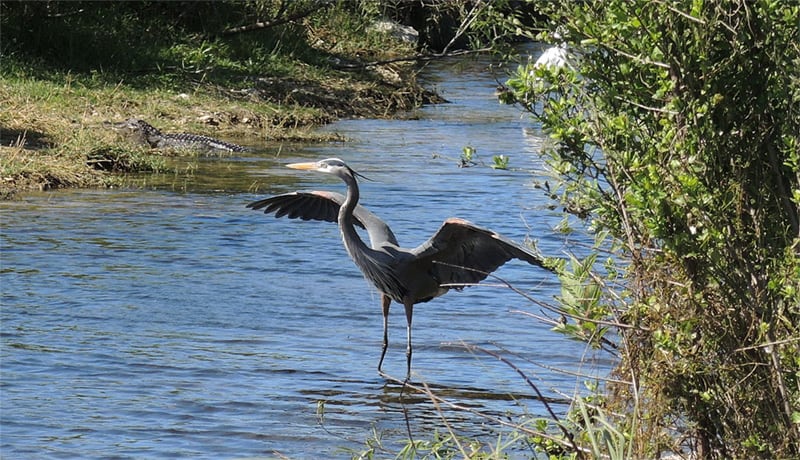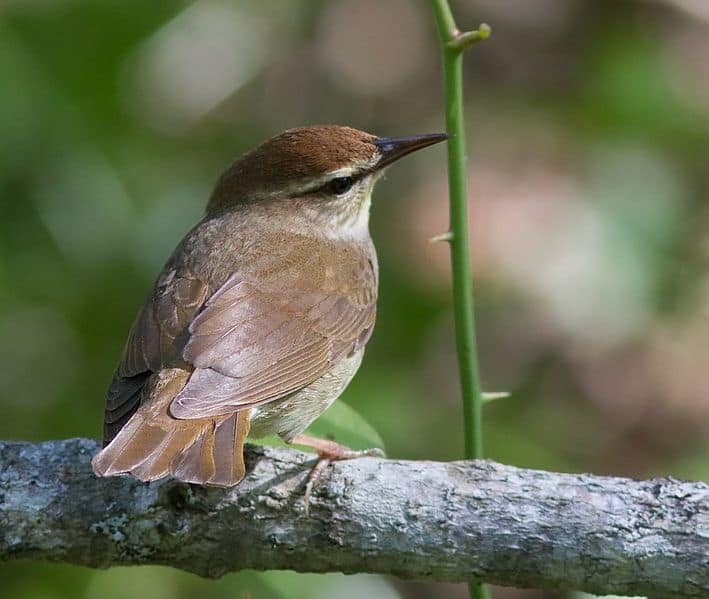Fall Birds of Illinois (September, October, November)
Fall migration is a much less hurried affair for birds compared with spring, when various species are rushing to get to their breeding grounds and find the best places to nest. You can enjoy migrating songbirds afield or even in your own backyard, especially if you provide water, food, and shelter. In August and September a hummingbird feeder will attract migrating ruby-throated hummingbirds, and dripping water will attract various warbler species, especially the more common ones like Tennessee warbler and yellow-rumped warbler. Cedar waxwings, Swainson’s thrushes, and robins love elderberry and winterberry, among other native plants bearing fruit in early fall. American goldfinches will feed on thistle you provide or on the seeds of many native prairie plants such as purple coneflower and blazing star.
In fall, the birds born that summer (juveniles) as well as adults migrate through Illinois, often at different times. Many of the young warblers and shorebirds look different from their parents and many of the adult warblers have worn plumages—so identifying all these species in fall can be a challenge.
September is the peak time for migrating songbirds such as warblers, grosbeaks and tanagers — most of the bird species in these groups only eat insects and have to continue south as the weather turns cold and the population of their prey diminishes. In September, too, huge numbers of common nighthawks ply the skies snatching the last of the season’s insects on their way to Central and South America. On a warm September day at dusk, nighthawks can be seen, even right over your house, as they feed on the wing.
Lake Chautauqua National Wildlife Refuge is the place to go August through September to view thousands upon thousands of shorebirds. On a given day, 10,000 shorebirds representing dozens of species may be feeding and resting at this national wildlife refuge. The most common are the pectoral sandpipers, lesser yellowlegs, and semipalmated sandpipers.
Meanwhile, buff-breasted sandpipers are visiting sod farms in northern Illinois. The short grassy fields mimic their favorite feeding grounds up north where they breed. Sometimes during fall migration, a buff-breasted sandpiper will perform its courtship display, raising wings to show bright white underneath.
Also in August and September, young waders such as little blue herons and snowy egrets may wander north from their southern Illinois breeding grounds, searching for food.
The end of September brings broad-winged hawks by the hundreds or even thousands. Hawk watchers look to the skies for a large group of these hawks riding thermals in the sky. Thermals are wind updrafts created by the sun warming the earth—and they give hawks the boost they need to migrate.
Come October, sparrows, ducks, scoters, and loons as well as different species of hawks migrate through Illinois. Sharp-shinned, Cooper’s hawks, red-tailed hawks, peregrine falcons and merlins fly over Illinois Beach State Park in northern Illinois and other hawk-watching spots in the state. Along Lake Michigan and on the downstate reservoirs come the mergansers, ruddy ducks, teal and other ducks that migrate along the Mississippi flyway.
Sandhill cranes are flying, too. In October and November on a clear, sunny day you can hear their rattling calls in the sky as they fly in formation to warmer climates. Many of them are headed to Jasper-Pulaski State Natural Area in Indiana, where they rest and feed until the cold weather drives them even farther south.
In Illinois impressive numbers of Canada geese fly overhead or feast in cornfields in October, November and December—if you look among the crowd you may find some snow geese, a few greater white-fronted geese, and even an occasional Ross’s goose. Snow geese come in two phases: the white phase, in which birds are all-white with black wing patches and the blue phase, in which birds are dark bodied with white heads. Greater-white fronted geese, which breed in the tundra, have recently become more common as migrants in Illinois. This goose has a pinkish orange bill, white forehead, dark body and bright orange feet.
Fall is a terrific time to search for rare birds. Young birds that have never migrated before may get off course, and hurricane season can also send birds out of their range—many of the state’s rarities have occurred in October and November. Birders call state hotlines and check the state birding listserve to find out if any rarities have been found; and then they go chasing them. Some recent rarities seen in fall in Illinois include western grebe, sharp-tailed sandpiper, vermilion flycatcher and even brown pelican, a bird that typically lives along our ocean coasts.
November can be a cold, rainy, blustery month, but if you dress warmly and visit the Lake Michigan shoreline or downstate reservoirs, you can glimpse flyby jaegers, kittiwakes, scoters, migrating tundra swans, and the arrival of wintering gulls such as Iceland and Thayer’s gulls. November is also the month to search for the rare purple sandpiper—birders almost always find one or two purple sandpipers each November at Waukegan Harbor along Lake Michigan.
As November draws to a close, northern shrikes, pine siskins, crossbills, and other irruptive species have settled into Illinois for the winter. An irruptive species is one that moves irregularly, and not every year, when its food source in its northern habitats is depleted. The northern shrike eats voles (as well as other mammals and birds) in its breeding grounds in Canada and northern United States; but when the vole population crashes, the northern shrike moves farther south until it can find another source of food. This bird needs hundreds of acres of habitat in which to feed all winter long. It’s the only songbird that hunts other songbirds and impales the carcasses if its prey on thorns of trees, barbed wires, and other places, storing the food for another day. Some years, shrikes are more plentiful than others, but there’s no doubt when a birder spots a shrike, it signals the end of fall and the beginning of winter birding.



